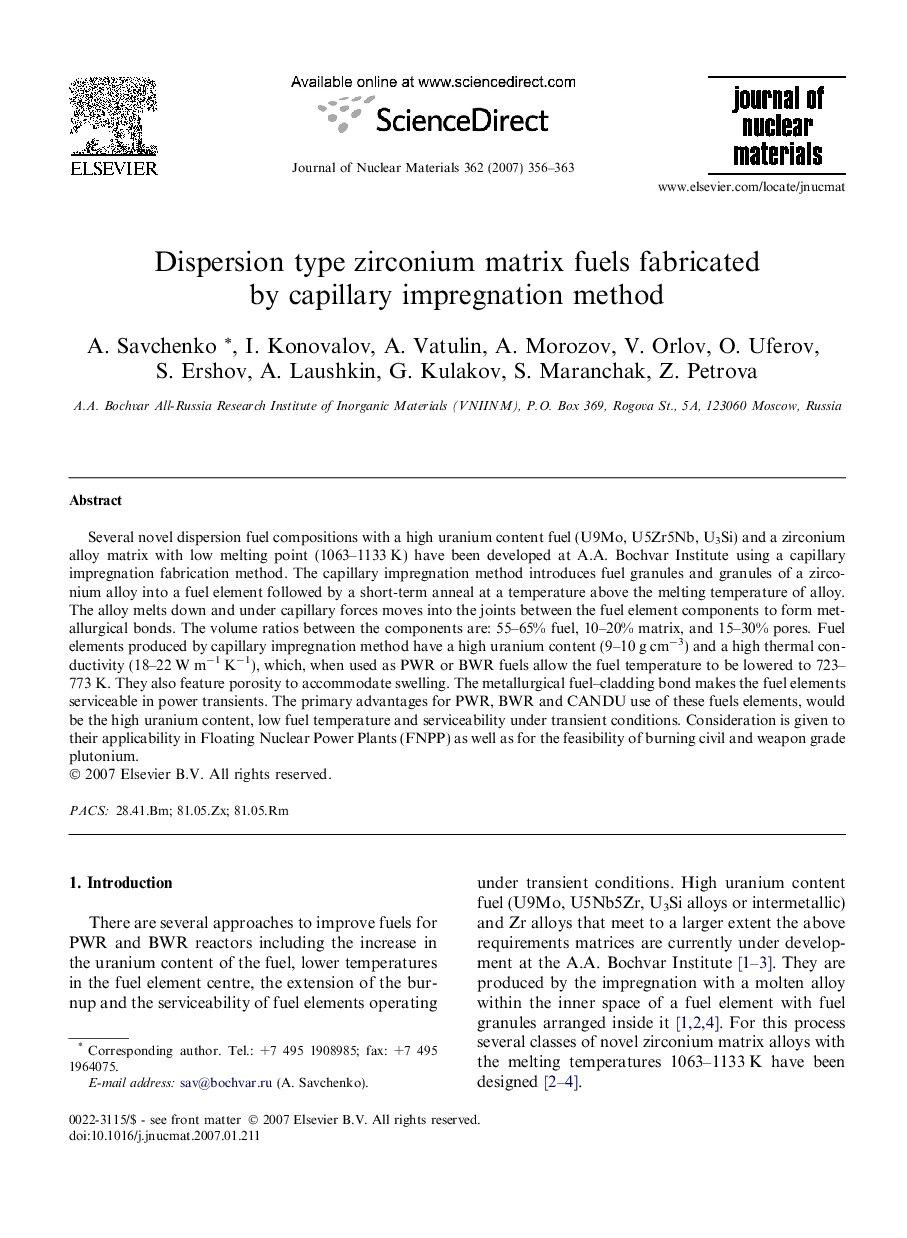| Article ID | Journal | Published Year | Pages | File Type |
|---|---|---|---|---|
| 1569500 | Journal of Nuclear Materials | 2007 | 8 Pages |
Several novel dispersion fuel compositions with a high uranium content fuel (U9Mo, U5Zr5Nb, U3Si) and a zirconium alloy matrix with low melting point (1063–1133 K) have been developed at A.A. Bochvar Institute using a capillary impregnation fabrication method. The capillary impregnation method introduces fuel granules and granules of a zirconium alloy into a fuel element followed by a short-term anneal at a temperature above the melting temperature of alloy. The alloy melts down and under capillary forces moves into the joints between the fuel element components to form metallurgical bonds. The volume ratios between the components are: 55–65% fuel, 10–20% matrix, and 15–30% pores. Fuel elements produced by capillary impregnation method have a high uranium content (9–10 g cm−3) and a high thermal conductivity (18–22 W m−1 K−1), which, when used as PWR or BWR fuels allow the fuel temperature to be lowered to 723–773 K. They also feature porosity to accommodate swelling. The metallurgical fuel–cladding bond makes the fuel elements serviceable in power transients. The primary advantages for PWR, BWR and CANDU use of these fuels elements, would be the high uranium content, low fuel temperature and serviceability under transient conditions. Consideration is given to their applicability in Floating Nuclear Power Plants (FNPP) as well as for the feasibility of burning civil and weapon grade plutonium.
